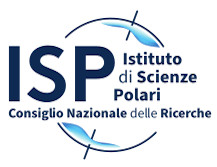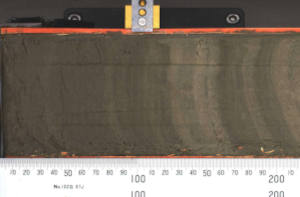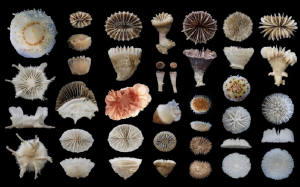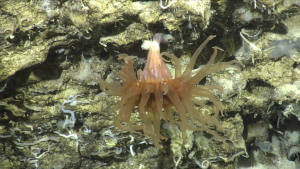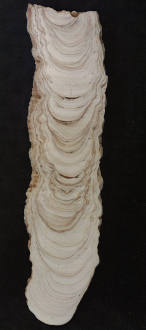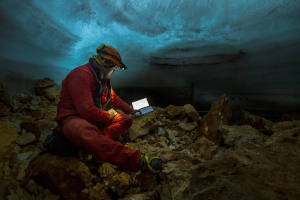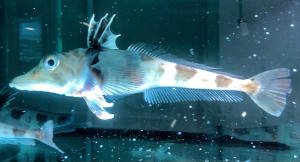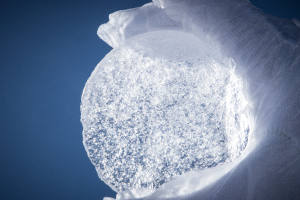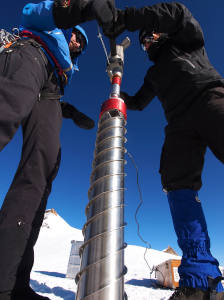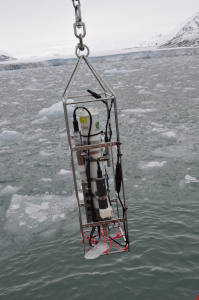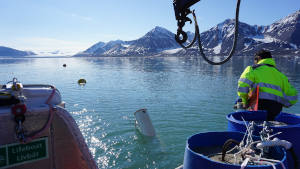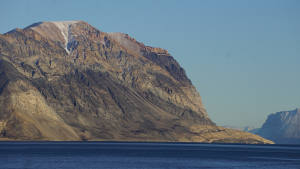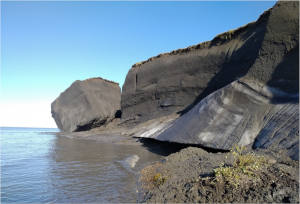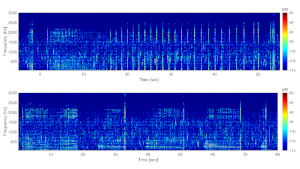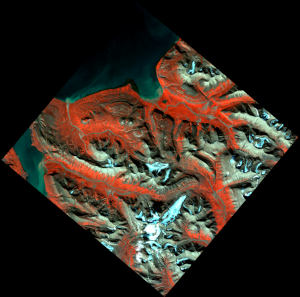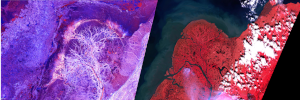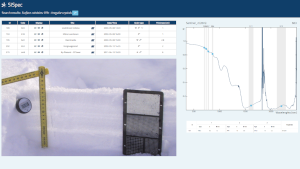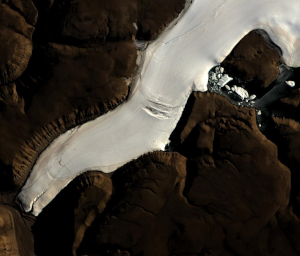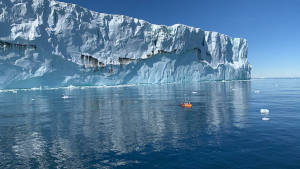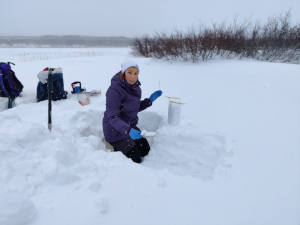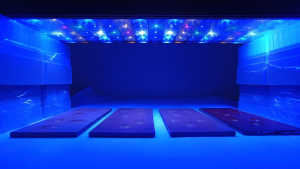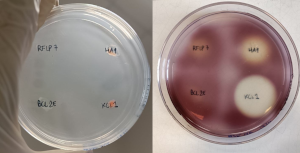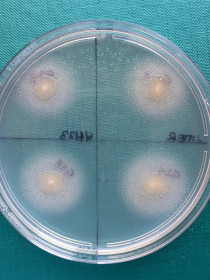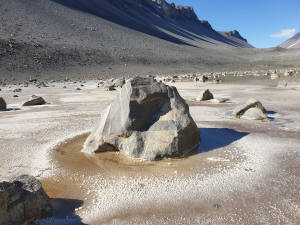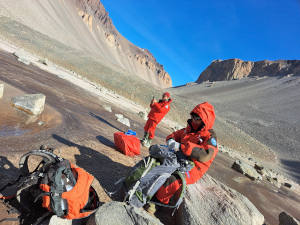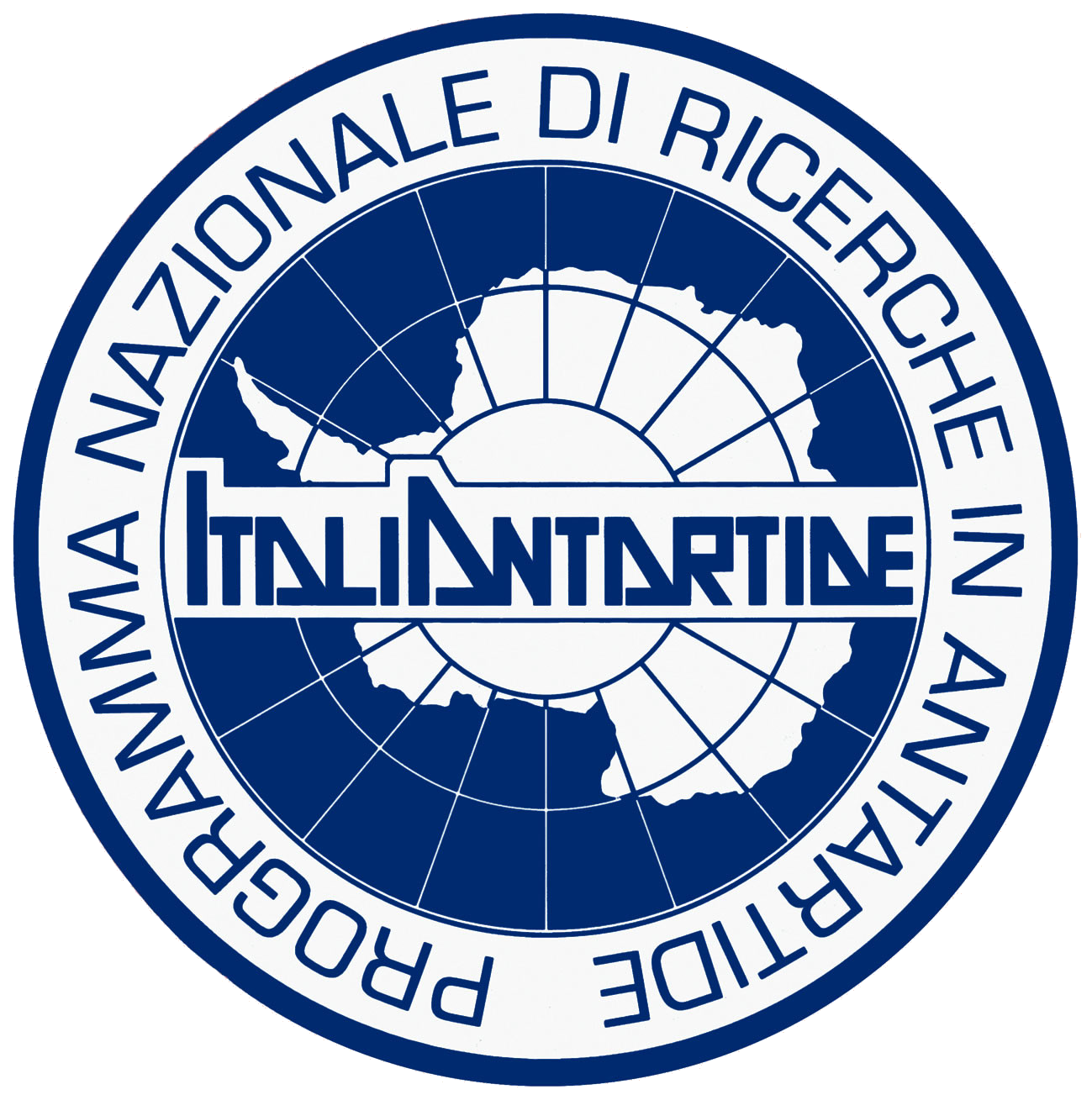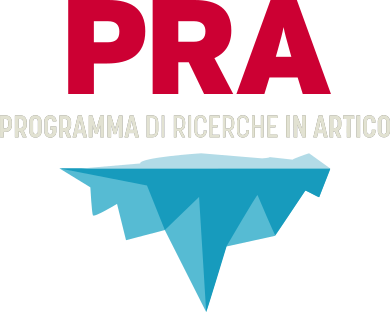English_content
The Anthropocene Epoch is a novel, yet unofficial, unit of geologic time, used to describe the most recent period in Earth’s history when human activity started to have a significant impact on the planet’s climate and ecosystems. The Anthropocene is also a period characterized by an unprecedented technology level that allows us to measure essential variables of the climate system (ECVs) at high temporal resolution (e.g. satellites) and forecast future climate scenarios using state-of-the-art supercomputers based on Shared Socioeconomic Pathways (SSPs). However, instrumental records exist only since the mid XX century while simulations are time-limited to a few centuries. Thus, it remains elusive whether the documented and predicted changes are part of the long-term natural variability of the climate system. In this respect, climate archives such as ice cores, marine/lake sediment cores, corals, speleothems and tree-rings offer an extraordinary perspective of the past climate evolution and, thus, they represent a fundamental benchmark to place on-going climate change into a larger context of long-term natural climate variability. In particular, the past climate is punctuated by important climate events that can be used as examples (not necessarily analogues) to assess the rate of natural changes and understand the interactions between critical components of the climate system including external and internal forcings. Thus, paleo-climatology is a fundamental research field for the study of the Anthropocene as it provides insight into how Earth's climate system works and how it may change in the future. This, ultimately, improves climate models by lowering uncertainties on future projections.
Natural archives of past climate history are pillars for paleoclimatologists as they literally represent time machines. Scientists look for clues of past events in these records as biological, geochemical, and sedimentary indicators used for the empirical quantification of climatic and environmental parameters, something generally referred to as proxies. Each type of archive comes with its benefits and drawbacks. Thus, paleo-studies greatly benefit from the integration of complementary archives together to have an interdisciplinary overview on how the climate system works.
Main ERC Panels:
• PE4_5 - Analytical chemistry
• PE4_18 - Environment chemistry
• PE10_1 - Atmospheric chemistry, atmospheric composition, air pollution
• PE10_3 - Climatology and climate change
• PE10_6 - Palaeoclimatology, palaeoecology
• PE10_8 - Oceanography (physical, chemical, biological, geological)
• PE10_9 - Biogeochemistry, biogeochemical cycles, environmental chemistry
• PE10_11 - Geochemistry, cosmochemistry, crystal chemistry, isotope geochemistry, thermodynamics
• PE10_18 - Cryosphere, dynamics of snow and ice cover, sea ice, permafrosts and ice sheets
Referents: Andrea Spolaor, Tommaso Tesi
Contact: info-paleoclimate AT isp.cnr.it
Sub-themes
Ice cores
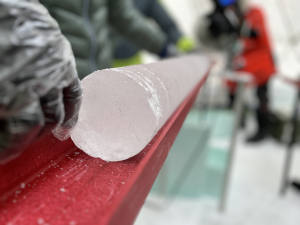 Ice cores are among the best resolved archives of the past Earth climate to the point that it is possible to describe even seasonal climate oscillations. They are drilled on mountain glaciers and ice sheets, where year-round below freezing temperatures allow undisturbed solid deposition and preservation of the original stratigraphy. Ice cores recovered from Antarctica and Greenland provide the oldest records, covering respectively the last 800 000 and 125 000 years. Yet, important climate information can also be extracted from non-polar glaciers such in the Alpine, Andes and the Himalaya regions. Among the climatic information, ice core analyses can give insight to past temperatures, volcanism, winds, precipitation, aridity, solar activity, change in biogeochemical cycle and atmospheric composition. In particular, ice core records are valuable paleo archives for the past atmospheric composition since the ice can trap the chemical compounds and their abundance as well as the gasses concentration, preserved in the ice as air bubbles of an ancient atmosphere. Physical properties of the ice layers identified in the core can also be studied and provide the past history of ice sheet dynamics.
Ice cores are among the best resolved archives of the past Earth climate to the point that it is possible to describe even seasonal climate oscillations. They are drilled on mountain glaciers and ice sheets, where year-round below freezing temperatures allow undisturbed solid deposition and preservation of the original stratigraphy. Ice cores recovered from Antarctica and Greenland provide the oldest records, covering respectively the last 800 000 and 125 000 years. Yet, important climate information can also be extracted from non-polar glaciers such in the Alpine, Andes and the Himalaya regions. Among the climatic information, ice core analyses can give insight to past temperatures, volcanism, winds, precipitation, aridity, solar activity, change in biogeochemical cycle and atmospheric composition. In particular, ice core records are valuable paleo archives for the past atmospheric composition since the ice can trap the chemical compounds and their abundance as well as the gasses concentration, preserved in the ice as air bubbles of an ancient atmosphere. Physical properties of the ice layers identified in the core can also be studied and provide the past history of ice sheet dynamics.
Changes and evolution of polar systems: processes, feedback mechanisms and interactions on a global scale
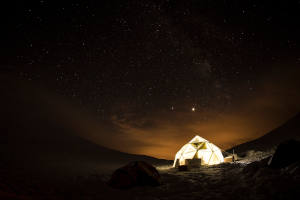 The Earth system is highly interconnected. In this thematic area research activities are aimed at deepening our understanding of the processes and interactions among the different components of the climate system and assessing its responses to global changes. A more comprehensive and holistic understanding of the polar system is needed to guide future climate policy decisions. The knowledge of the characteristics of the polar atmosphere is crucial for studying the biogeochemical cycles of natural chemical species, the long-range transport processes of pollutants and climate-altering compounds and the feedback mechanisms triggered by the atmospheric warming and the interaction of the atmosphere with the cryosphere and oceans.
The Earth system is highly interconnected. In this thematic area research activities are aimed at deepening our understanding of the processes and interactions among the different components of the climate system and assessing its responses to global changes. A more comprehensive and holistic understanding of the polar system is needed to guide future climate policy decisions. The knowledge of the characteristics of the polar atmosphere is crucial for studying the biogeochemical cycles of natural chemical species, the long-range transport processes of pollutants and climate-altering compounds and the feedback mechanisms triggered by the atmospheric warming and the interaction of the atmosphere with the cryosphere and oceans.
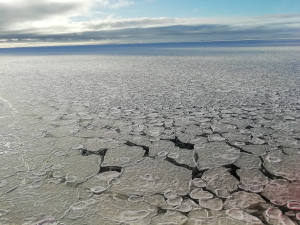 The cryosphere constitutes a very fragile portion of the Earth system, made even more vulnerable by climate change. Through multidisciplinary and interconnected research activities, the study of snow and ice, their chemical composition and their main physical parameters, the evolution of the permafrost and the increased melting impact on the atmosphere, biosphere and hydrosphere at both regional and global levels is being pursued.
The cryosphere constitutes a very fragile portion of the Earth system, made even more vulnerable by climate change. Through multidisciplinary and interconnected research activities, the study of snow and ice, their chemical composition and their main physical parameters, the evolution of the permafrost and the increased melting impact on the atmosphere, biosphere and hydrosphere at both regional and global levels is being pursued.
The hydrosphere consists largely of the oceans, which influence the Earth system in all its spheres by storing and redistributing fresh water, heat, climate-altering gases, and other particulate and dissolved substances. Oceanographic research supports more accurate predictions of global changes by studying the chemical and physical properties of seas and oceans, their movements, energy exchanges with the atmosphere, the organisms that inhabit them, and the geological structure of ocean basins. Polar limnological environments are studied as both sentinels of climate change and to investigate the responses of their short trophic net to these changes, including anthropogenic perturbations.
Polar ecosystems are an important reservoir of natural resources and can partly mitigate the effects of climate change from which they are threatened today. The study of biodiversity and resilience to global changes with an ecosystem approach, integrating the influence of environmental factors, community-level interspecific relationships, and socio-economic aspects is a challenge for effective and sustainable management of natural resources.
Main ERC Panels:
• LS8 - Ecology, Evolution and Environmental Biology
• PE4 - Physical and Analytical Chemical Sciences
• PE10 - Earth System Science
• SH2 - Institutions, Values, Environment and Space
• SH7 - Human Mobility, Environment, and Space
Referentes: Nicoletta Ademollo, Maurizio Azzaro, Fabiana Corami, Federico Giglio, Stefania Gilardoni
Contact: info-polarchanges AT isp.cnr.it
Sub-themes
Atmosphere
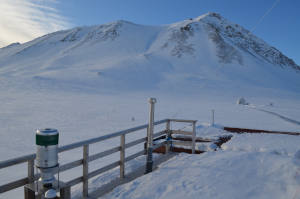 The atmosphere as an environmental matrix proves to be a medium of rapid global dispersion of climate-altering compounds and pollutants. Various compounds characterize the atmosphere; among these, climate-altering compounds, i.e., greenhouse gases that affect the Earth's energy and heat balance, and atmospheric aerosols, are of relevant interest. Due to its characteristics of stability and thermal inversion and the presence of the polar vortex, the polar atmosphere is an ideal observatory to be able to assess the energy exchanges and interactions of various phenomena with atmospheric circulation, including at different spatiotemporal scales, transport to high latitudes, aerosol composition, and biogeochemical cycles of the natural chemical species and pollutants present. Atmospheric aerosols play a key role in human-induced climate change because they influence the planet's radiative budget (absorption and scattering of solar radiation and surface albedo), cloud formation, and properties. In particular, atmospheric aerosols influence and amplify climate change. Atmospheric particulate matter consists of particles of natural origin (volcanic eruptions, fires, ocean emissions, resuspension of soil dust) and particles of anthropogenic origin (industrial emissions, combustion processes, micro- and nanoplastics). It is critical, thus, to identify chemical, biochemical, and biological tracers to study the origin and composition of polar aerosols and understand their climatic feedback. Although present in trace amounts, organic compounds, black carbon, sea salt, and microplastics (< 100 µm) may act as cloud condensation nuclei, thereby affecting albedo and precipitation, as well as radiation budget and climate. Black carbon, microplastics, and dust could also act as ice-nucleating particles.
The atmosphere as an environmental matrix proves to be a medium of rapid global dispersion of climate-altering compounds and pollutants. Various compounds characterize the atmosphere; among these, climate-altering compounds, i.e., greenhouse gases that affect the Earth's energy and heat balance, and atmospheric aerosols, are of relevant interest. Due to its characteristics of stability and thermal inversion and the presence of the polar vortex, the polar atmosphere is an ideal observatory to be able to assess the energy exchanges and interactions of various phenomena with atmospheric circulation, including at different spatiotemporal scales, transport to high latitudes, aerosol composition, and biogeochemical cycles of the natural chemical species and pollutants present. Atmospheric aerosols play a key role in human-induced climate change because they influence the planet's radiative budget (absorption and scattering of solar radiation and surface albedo), cloud formation, and properties. In particular, atmospheric aerosols influence and amplify climate change. Atmospheric particulate matter consists of particles of natural origin (volcanic eruptions, fires, ocean emissions, resuspension of soil dust) and particles of anthropogenic origin (industrial emissions, combustion processes, micro- and nanoplastics). It is critical, thus, to identify chemical, biochemical, and biological tracers to study the origin and composition of polar aerosols and understand their climatic feedback. Although present in trace amounts, organic compounds, black carbon, sea salt, and microplastics (< 100 µm) may act as cloud condensation nuclei, thereby affecting albedo and precipitation, as well as radiation budget and climate. Black carbon, microplastics, and dust could also act as ice-nucleating particles. 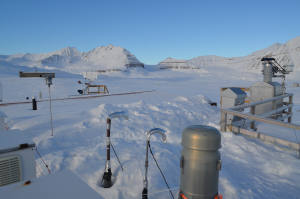 The presence of these particles in the atmosphere and sea ice impacts albedo and can alter sea ice permeability and solar radiation absorption with feedback on sea ice melt. In a rapidly changing polar area like the Arctic, microplastic pollution adds to the effects of climate change in terms of sources, transport processes, feedback, and ecological consequences. Other stressors present in atmospheric aerosols may include medium volatile organic compounds, water-soluble compounds, phenolic compounds, and trace elements. The presence of chemical stressors affects the physical dynamics of the atmosphere, mainly through interaction with both solar and terrestrial radiation, helping to amplify the increase in air temperature, which in turn impacts sea ice melting, humidity, cloudiness, and precipitation, significantly affecting the climate system. Monitoring the physical parameters and processes and the dynamics of the atmosphere through the use of various measurement methodologies (including remote sensing) is essential for the in-depth understanding of the synergies between the various components and for developing increasingly efficient weather-climate forecasting models. It is necessary to study in depth all the processes that characterize the atmospheric boundary layer to improve the quality of the results of weather and climate forecasting models.
The presence of these particles in the atmosphere and sea ice impacts albedo and can alter sea ice permeability and solar radiation absorption with feedback on sea ice melt. In a rapidly changing polar area like the Arctic, microplastic pollution adds to the effects of climate change in terms of sources, transport processes, feedback, and ecological consequences. Other stressors present in atmospheric aerosols may include medium volatile organic compounds, water-soluble compounds, phenolic compounds, and trace elements. The presence of chemical stressors affects the physical dynamics of the atmosphere, mainly through interaction with both solar and terrestrial radiation, helping to amplify the increase in air temperature, which in turn impacts sea ice melting, humidity, cloudiness, and precipitation, significantly affecting the climate system. Monitoring the physical parameters and processes and the dynamics of the atmosphere through the use of various measurement methodologies (including remote sensing) is essential for the in-depth understanding of the synergies between the various components and for developing increasingly efficient weather-climate forecasting models. It is necessary to study in depth all the processes that characterize the atmospheric boundary layer to improve the quality of the results of weather and climate forecasting models.
Main ERC Panels:
• LS8 - Ecology, Evolution and Environmental Biology
• PE4 - Physical and Analytical Chemical Sciences
• PE10 - Earth System Science
• SH2 - Institutions, Values, Environment and Space
• SH7 - Human Mobility, Environment, and Space
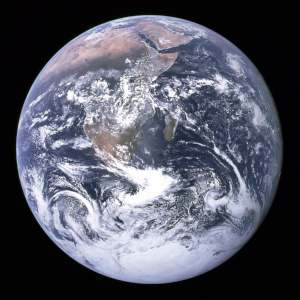 The main activities of the thematic area Earth Observation (EO) and Polar Ecosystem Modeling include remote and proximal sensing, spatial analysis, thematic mapping, and geographic and environmental knowledge organization. The activity focuses on three main methodological pillars: remote and in situ observations, information organization, and representation by numerical and conceptual models.
The main activities of the thematic area Earth Observation (EO) and Polar Ecosystem Modeling include remote and proximal sensing, spatial analysis, thematic mapping, and geographic and environmental knowledge organization. The activity focuses on three main methodological pillars: remote and in situ observations, information organization, and representation by numerical and conceptual models. 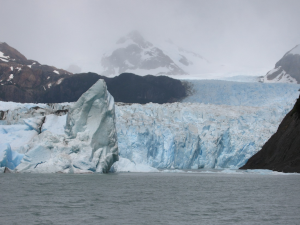 The research of this thematic area focuses on the responses of polar ecosystems to changes in air and sea temperature, in polar ice caps, in sea level height, and in persistence and thickness of snowpack and ice, also through the comparisons of climate belts. Analyses also cover permafrost evolution, coastal erosion, accretion processes, release and segregation of climate-altering gases, biogeochemical cycles, and biodiversity. The observational methodologies aim to detect environmental and climate dynamics at different spatial and temporal scales by identifying and studying multiple essential variables and their biological and geophysical interactions by integrating information from different platforms. The continuous comparison allows the combination of spatial and ecological models with observations.
The research of this thematic area focuses on the responses of polar ecosystems to changes in air and sea temperature, in polar ice caps, in sea level height, and in persistence and thickness of snowpack and ice, also through the comparisons of climate belts. Analyses also cover permafrost evolution, coastal erosion, accretion processes, release and segregation of climate-altering gases, biogeochemical cycles, and biodiversity. The observational methodologies aim to detect environmental and climate dynamics at different spatial and temporal scales by identifying and studying multiple essential variables and their biological and geophysical interactions by integrating information from different platforms. The continuous comparison allows the combination of spatial and ecological models with observations.
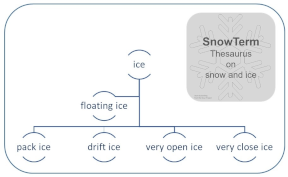 The team has a group dedicated to organizing multilingual terminological knowledge, thesauri, and metadata to support data description and environmental information, focusing on polar environments. The subject area develops, by Findable Accessible Interoperable Reusable (FAIR) principles, data chains and products to support the study of terrestrial, aquatic, and cryosphere systems and the development of interoperable GIS, thematic mapping, and operational services. Figure 1: the Spegazzini Glacier (Los Glaciares National Park, Santa Cruz, Argentina, January 2010), together with the Upsala and the Perito Moreno Glaciers, feeds the Lago Argentino in the Los Glaciares National Park, in this photo, the calving-type glacier front is visible, characterized by abundant seracs, which can reach 135 m in height.
The team has a group dedicated to organizing multilingual terminological knowledge, thesauri, and metadata to support data description and environmental information, focusing on polar environments. The subject area develops, by Findable Accessible Interoperable Reusable (FAIR) principles, data chains and products to support the study of terrestrial, aquatic, and cryosphere systems and the development of interoperable GIS, thematic mapping, and operational services. Figure 1: the Spegazzini Glacier (Los Glaciares National Park, Santa Cruz, Argentina, January 2010), together with the Upsala and the Perito Moreno Glaciers, feeds the Lago Argentino in the Los Glaciares National Park, in this photo, the calving-type glacier front is visible, characterized by abundant seracs, which can reach 135 m in height.
Main ERC Panels:
• LS8 - Environmental Biology, Ecology and Evolution
• PE10 - Earth System Science
• SH7 - Human Mobility, Environment, and Space
• SH2 - Institutions, Values, Environment and Space
Referents: Francesco De Biasio, Francesco Filiciotto, Emiliana Valentini, Matteo Zucchetta
Contacts: info-observation AT isp.cnr.it
Sub-Theme
Atmosphere
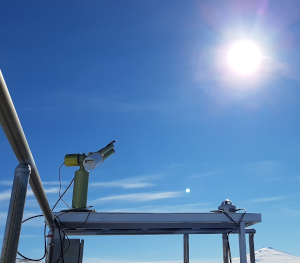 Characterization of the atmospheric column by remote sensing techniques and study of aerosol at the interface with the ground, use of EO data and their validation with ground-based measurements. Atmospheric chemistry, microchemistry, and climate-altering microphysics (use of thematic products of fire emissions and air pollution); physics of the atmosphere by point measurements at permanent observatories in polar and high-altitude areas, both fixed and mobile (ships); bioaerosol and its quantitative and qualitative composition. Study of the spatial structure of wind over the sea at various resolutions (from tens of km to 500 m) obtained through radar echo detections from the sea surface and Synthetic Aperture Radar (SAR) satellite images, integrated with artificial intelligence (AI) techniques in a continuous comparison with ground truth and numerical modeling.
Characterization of the atmospheric column by remote sensing techniques and study of aerosol at the interface with the ground, use of EO data and their validation with ground-based measurements. Atmospheric chemistry, microchemistry, and climate-altering microphysics (use of thematic products of fire emissions and air pollution); physics of the atmosphere by point measurements at permanent observatories in polar and high-altitude areas, both fixed and mobile (ships); bioaerosol and its quantitative and qualitative composition. Study of the spatial structure of wind over the sea at various resolutions (from tens of km to 500 m) obtained through radar echo detections from the sea surface and Synthetic Aperture Radar (SAR) satellite images, integrated with artificial intelligence (AI) techniques in a continuous comparison with ground truth and numerical modeling.
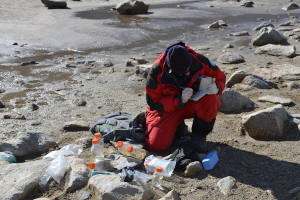 The Biosciences thematic area deals with the study of the biosphere in polar areas at different levels of biological complexity, from molecules to ecosystems and up to biomes. In particular, the attention is focused on the description and quantification of the biodiversity of the organisms that inhabit polar environments, to evaluate their structural and functional complexity. In this regard, scenarios of population shifts, changes in biodiversity and biogeochemical processes deriving from climate change and human impact are evaluated. The main interest is focused on the interactions between biological and ecological aspects, together with abiotic processes and effects on the carbon cycle and energy flows in the polar regions. Further fields of investigation concern the research of biomolecules of microbial origin, the ability of polar microorganisms to degrade organic contaminants and astrobiological aspects linked to life in extreme environments.
The Biosciences thematic area deals with the study of the biosphere in polar areas at different levels of biological complexity, from molecules to ecosystems and up to biomes. In particular, the attention is focused on the description and quantification of the biodiversity of the organisms that inhabit polar environments, to evaluate their structural and functional complexity. In this regard, scenarios of population shifts, changes in biodiversity and biogeochemical processes deriving from climate change and human impact are evaluated. The main interest is focused on the interactions between biological and ecological aspects, together with abiotic processes and effects on the carbon cycle and energy flows in the polar regions. Further fields of investigation concern the research of biomolecules of microbial origin, the ability of polar microorganisms to degrade organic contaminants and astrobiological aspects linked to life in extreme environments.
The central themes of the research carried out within the Biosciences Thematic Area are (1) structural and functional organization of polar ecosystems and dynamics of populations and communities; (2) response of individuals, populations and communities to external influences of climatic and anthropogenic origin (including loss and fragmentation of habitat, withdrawal, extraction, pollution, etc.); (3) biotechnological implications deriving from adaptation to low temperatures and/or other physical-chemical factors.
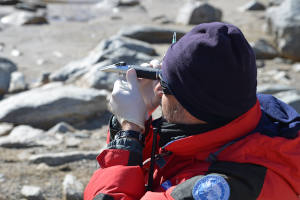 Research objectives include:
Research objectives include:
• the study of structural and functional diversity and the ecophysiology of polar organisms, to shed light on the limits of adaptation, also in relation to climate change and human impacts;
• the study of biogeochemistry and ecology in marine and terrestrial habitats at the Poles, including the environmental factors controlling biological interactions;
• the estimation of the biotechnological potential of organisms adapted to life at low temperatures and/or other physical-chemical factors;
• the exploration of behavior and evolution of polar ecosystems, through spatial-temporal analyses of ecological processes;
• the management and conservation of polar marine resources;
• comparison between trends observed in polar areas and middle latitudes. The Thematic Area Biosciences is organized into the 4 sections, i.e. Biodiversity and adaptation, Biogeochemistry, Biotechnology and Astrobiology.
Main ERC Panels:
• LS8 - Environmental Biology, Ecology and Evolution
• LS9 - Biotechnology and Biosystems Engineering
• PE10 - Earth System Science
Referents: Angelina Lo Giudice, Mario La Mesa, Cairns Warren Raymond Lee
Contact: info-biosciences AT isp.cnr.it
Sub-themes
Biodiversity and adaptations
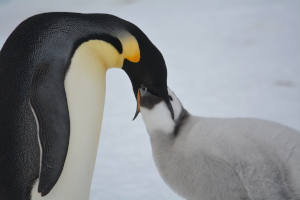 Polar biological communities are generally subjected to the influence of various factors concomitant with low temperatures, such as dehydration, ice cover, low nutrient availability, exposure to harmful solar radiation (e.g. UV-B radiation), highly variable light periods and, in specific cases, high salinity and osmotic stress. Biodiversity guarantees the functioning of all ecosystems, so studying the properties and temporal evolution of polar ecosystems is a tool of fundamental importance for improving our knowledge on their current state and for making future predictions in relation to climatic change. The analysis and monitoring of the biodiversity of biological communities and their ecological dynamics constitute the focal point of this research topic. Of particular interest is the study of morphological-functional adaptation mechanisms adopted by polar organisms for survival in extreme conditions. Temporal processes and spatial patterns of greening are also considered through remote sensing technologies, especially as a response to the deepening of the active layer of the Arctic permafrost.
Polar biological communities are generally subjected to the influence of various factors concomitant with low temperatures, such as dehydration, ice cover, low nutrient availability, exposure to harmful solar radiation (e.g. UV-B radiation), highly variable light periods and, in specific cases, high salinity and osmotic stress. Biodiversity guarantees the functioning of all ecosystems, so studying the properties and temporal evolution of polar ecosystems is a tool of fundamental importance for improving our knowledge on their current state and for making future predictions in relation to climatic change. The analysis and monitoring of the biodiversity of biological communities and their ecological dynamics constitute the focal point of this research topic. Of particular interest is the study of morphological-functional adaptation mechanisms adopted by polar organisms for survival in extreme conditions. Temporal processes and spatial patterns of greening are also considered through remote sensing technologies, especially as a response to the deepening of the active layer of the Arctic permafrost.
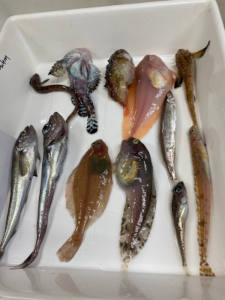 The growing human footprint in the polar regions, already made vulnerable by ongoing climate change, can have negative effects through pollution, habitat destruction, introduction and proliferation of invasive/alien species and overexploitation of resources. The study of the levels of contamination and of the potential for bioaccumulation and biomagnification in the food web makes it possible to provide integrated information on the ecosystem by identifying the hotspots in which species may be more vulnerable and sensitive to climate variability. Of interest is also the study of the colonization processes of plastic polymers, with structural and functional analysis of microbial biofilms (plastisphere) and their response to anthropic/natural forces.
The growing human footprint in the polar regions, already made vulnerable by ongoing climate change, can have negative effects through pollution, habitat destruction, introduction and proliferation of invasive/alien species and overexploitation of resources. The study of the levels of contamination and of the potential for bioaccumulation and biomagnification in the food web makes it possible to provide integrated information on the ecosystem by identifying the hotspots in which species may be more vulnerable and sensitive to climate variability. Of interest is also the study of the colonization processes of plastic polymers, with structural and functional analysis of microbial biofilms (plastisphere) and their response to anthropic/natural forces.
Main ERC Panels:
• LS8_1 - Ecosystem and community ecology, macroecology
• LS8_2 - Biodiversity
• LS8_5 - Biological aspects of environmental change, including climate change
• LS8_12 - Microbial ecology and evolution
• LS8_13 - Marine biology and ecology
• PE10-1 - Atmospheric chemistry, atmospheric composition, air pollution
• PE10_17 - Hydrology, hydrogeology, engineering and environmental geology, water and soil pollution
ISP's research activities take place, mainly though not exclusively, in Antarctica and the Arctic, where snow and ice are the dominant aspect of the landscape. These regions, more than others, are affected by climate change. Understanding the history of our planet, and how human activities, from the origins of the first civilizations to the present day, have influenced ecosystems, by interacting and modifying the delicate balances that govern the earth's climate system, is the challenge we face. The history enclosed and preserved in ice and, going even further back in time, in sediments, even in times before the appearance of man, is an important topic addressed by ISP researchers.
Mute witnesses of these changes are the polar biological communities: on them the anthropic impact can be devastating. It is essential to improve our knowledge of their current state, to understand their evolution, with a view to future research missions in space. In fact, some polar habitats represent important terrestrial laboratories for astrobiological studies.
All these activities, and many others, are deepened in the thematic areas that characterize the institute.
The Institute can provide paid services, in compliance with the current Regulations for the Generation, Management and Enhancement of Intellectual Property on the results of CNR research, for services on behalf of third parties (Contractual research).
The laboratories of the Institute of Polar Sciences carry out chemical, chemical-physical, microbiological analyzes on various environmental matrices, issuing the relevant certificate or technical / scientific reports.
The analyzes are performed ONLY UPON REQUEST sent by email to the address of the Laboratory / Instrumentation Contact and in cc to the Director of the Institute (direttore.isp AT cnr.it) for the Venice headquarters and the secondary site of Padua or to Head of branches (responsabile_bo AT cnr.it; responsabile_me AT cnr.it; responsabile_rm AT cnr.it) for the secondary sites of Bologna, Messina and Rome, containing the name, address and signature of the Applicant. The analyzes to be carried out, the number of samples and everything else to be requested must be listed.
By the mere fact of submitting the request, the rules and consequent charges are understood to be known and accepted by the Applicant. After receiving the request, the Contact Person, having obtained the clearance from the Director / Head of the branches, will send a cost quotation and indicate an expected date of delivery of the results.
The samples to be analyzed must be sent, free of all charges, to the branches of the contact person according to the methods indicated in the quotation. The rates that will be communicated are net of VAT and include the execution of the analyzes and the sending of a form containing the related results. No interpretation and / or evaluation of the analysis results will be made by the laboratory involved.
 PhD student in polar sciences at Ca’ Foscari University of Venice. Bachelor graduated in Physics at University of Torino and master graduated in Physics of Meteoclimatic System at University of Torino. The master thesis was based on an analysis of the Apollo cyclone and its possible transition to MEDIterranean hurricane (MEDICANE) during the 26-29th October 2021 using the WRF meteorological model.
PhD student in polar sciences at Ca’ Foscari University of Venice. Bachelor graduated in Physics at University of Torino and master graduated in Physics of Meteoclimatic System at University of Torino. The master thesis was based on an analysis of the Apollo cyclone and its possible transition to MEDIterranean hurricane (MEDICANE) during the 26-29th October 2021 using the WRF meteorological model.
Now she is working on remote sensing analysis of polar regions especially on the comparison of land and satellite measures near the Thule High Arctic Atmospheric Observatory (THAAO) in Greenland.
 Master’s degree in Natural Sciences (University of Milano), PhD Candidate in Environmental, Geological and Polar Sciences and Technologies (University of Siena) co-financed by the Italian National Antarctic Museum (MNA). Current position: research fellow at the Institute of Polar Sciences of the CNR (CNR-ISP) in Milano.
Master’s degree in Natural Sciences (University of Milano), PhD Candidate in Environmental, Geological and Polar Sciences and Technologies (University of Siena) co-financed by the Italian National Antarctic Museum (MNA). Current position: research fellow at the Institute of Polar Sciences of the CNR (CNR-ISP) in Milano.
Currently the research concerns the use of satellite images for the estimation of optical and thermal properties of glaciers at the margins of the Antarctic Ice Sheet as a part of the PNRA18 Project Bio-Geo Albedo feedback at Antarctic Ice-Sheet margins. Previously the research concerned the analysis by remote sensing of ablation areas in Antarctica, i.e., wind crust and blue ice, with particular attention to the snow megadune fields on the Antarctic plateau. He attended two PhD courses at The University Centre in Svalbard (NO), with which took part in a campaign in Nordaustlandet Island. As a visiting PhD student, he spent a period at the Finnish Meteorological Institute of Helsinki (FIN) and taught as a tutor for master’s and bachelor laboratories of Cartography and Geographic Information System at the University of Milan. Author of seven scientific publications in international journals.
 Degree M.Sc. Geology (University of Padua).
Degree M.Sc. Geology (University of Padua).
Current position: Researcher at Institute of Polar Sciences-CNR, Venezia; permanent position.
Previously: Researcher at the Institute for the Dynamics of Environmental Processes – CNR; scholarship at Università Ca’ Foscari di Venezia (Italy); fellowship at Università Ca’ Foscari di Venezia (Italy); research assistant at Institut de Biogeochimie Marine - ENS – CNRS, France.
Fields of interest: trace elements in real matrices (waters, particulate, microlayer, sediments, snow and ice) using ICP-mass spectrometry. Stable isotopes (δD, δ13C, δ15N, δ18O) in water, snow and ice by means of IR-mass spectrometry. Geochemical characterization of oceanic water masses. Rare earth elements as geochemical tracer in natural water systems: in snow and ice for paleoclimatic reconstruction, in aerosol as tracer of source area. Characterization of natural systems (seawater, particulate, sediments) via chemometrics tools.
Recent Research Projects - H2020: Beyond Epica (2019-2025) - Beyond EPICA Oldest Ice Core: 1,5 Myr of greenhouse gas – climate feedbacks – Researcher and member of the Management Support Team; PNRA project (2017-2019): EvASIon - Mercer and Whillans lakes: Evolution of hydrologically Active Subglacial environments – Project Leader; PNRA project (202-2014): CaBiLA- Geochemical characterization of Antarctic subglacial lakes) – Project Leader.; Progetto Premiale ARCA: Arctic - present Climatic change and pAst extreme events; Regione Veneto: Q-ALiVe - Quality of Venetian Littoral Environment – Project Leader; PRIN15 (2017-2020): RESACC - Responses of sensitive alpine ecosystems to climate change; PRIN09 – Arctica, Referent for WP4. Researcher under Antarctic campaigns on-board Italica vessel (2001 and 2005-2006 as project referent). Her research activity is testified by more than 60 research articles in international journal with peer review and 160 abstracts for communication/poster presentation in congresses. Present Hirsch Index: 20.
CNR People
Scopus - Author ID: 6602486850 ![]() http://orcid.org/0000-0003-3130-2901 WoS Researcher ID: O-2849-2015 Research Gate: Clara Turetta
http://orcid.org/0000-0003-3130-2901 WoS Researcher ID: O-2849-2015 Research Gate: Clara Turetta
 Graduated in Biological Sciences (2006) at Sapienza University, Rome and PhD in Ecology and Natural Resources Management (2013),Tuscia, University, Viterbo. She recently joined as researcher the CNR, Institute of Polar Sciences (2020) in Rome (Montelibretti) and she is lecturer in Remote Sensing and GIS for the Master Degree Course in Ecobiology at Sapienza, University, Rome.
Graduated in Biological Sciences (2006) at Sapienza University, Rome and PhD in Ecology and Natural Resources Management (2013),Tuscia, University, Viterbo. She recently joined as researcher the CNR, Institute of Polar Sciences (2020) in Rome (Montelibretti) and she is lecturer in Remote Sensing and GIS for the Master Degree Course in Ecobiology at Sapienza, University, Rome.
Her scientific activities started with studies on the anthropogenic impacts in marine and coastal environments and in 2011 she joined the team of technical research collaborators at the Italian Institute for Environmental Protection and Research as an expert in ecology and geospatial application to environmental monitoring with a permanent position.
Her research spans from terrestrial to aquatic sphere and includes the use of remote sensing principles and methods in the field of ecology, geography and environmental sciences. She develops integrated models for ecosystem services assessment, natural capital estimation and natural resources monitoring, considering bio-geosphere cross scales interaction and addressing landscape spatial patterns and temporal process. She has experience in national and international research and capacity building projects, publications and dissemination in scientific contexts. She actively participates in the GEOBON Ecosystem Structure working group and in the technical roundtables supporting the European Copernicus and National Space Economy programs.
More...
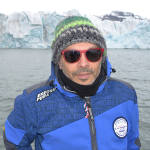 Born in Vibo Valentia. Currently, he is Researcher (permanent position) at the Institute of Polar Sciences – CNR, since June 2019.
Born in Vibo Valentia. Currently, he is Researcher (permanent position) at the Institute of Polar Sciences – CNR, since June 2019.
- Degree (MS) in Chemistry (University of Rome “La Sapienza”);
- Master's Diploma at the Department of Chemical Engineering (University of Rome “La Sapienza”);
- Doctoral school in Chemical, Environmental and Safety Engineering (University of Rome “La Sapienza”), and Doctoral school in Chemical Sciences (University of Ferrara) where He obtained his PhD. Previously.
He carried out research activities at the:
- Institute for the Dynamics of Environmental Processes (CNR-IDPA) in Venice,
- Institute of Atmospheric Pollution Research (CNR-IIA) in Montelibretti (Rome), and afterwards in Rende (Cosenza),
- Institute of Hygiene “G. Sanarelli“/Department of Public Health (University of Rome “La Sapienza”).
He taught General and Inorganic Chemistry, and Organic Chemistry at the University of Rome "La Sapienza" as Adjunct Professor (Professore a contratto) (2008-2019). He collaborated with several research groups, developing and optimizing active and passive sampling strategies and chemical analytical methods for organic and inorganic micro pollutants (PCDDs, PCDFs, PCBs, PAHs, COVs, and heavy metals) as well as major ions. He applied chromatographic methods, in particular, gas-chromatography/mass spectrometry, to matrices such as ambient air, atmospheric particulate matter, atmospheric deposition and natural waters. His interests have been focused on quantifying levels of contaminants, studying their transport, dynamics, fate and environmental impacts, in urban, rural and remote areas. In recent years he has been focusing on the determination of mercury at ultra-trace levels by using atomic fluorescence techniques, in air and atmospheric deposition, as well as in potable waters. He has substantially improved some analytical aspects by eliminating the operational criticalities associated with Hg detection. In the framework of the Global Mercury Observation System (GMOS) project, coordinated by the Institute of Atmospheric Pollution Research (CNR-IIA). He was responsible for analytical mercury measurements in bulk and wet-only deposition samples from different remote sites at the CNR-ISP.
He is member of the research group carrying out measurements at the high-altitude Observatory of Col Margherita (MRG) in the Eastern Alps (Belluno Dolomites). This activity is within the scope of the iGOSP (Integrated Global Observing Systems for Persistent Pollutants, strand 3 - Global Change and Environmental Treaties) of the European ERA-PLANET project (2017-2020). He has been involved in several measurement campaigns, in an oceanographic campaign in the Mediterranean Sea on board the research vessel R/V “Urania” as Chief-Scientist, and in research activities (e.g. Integrative and Comprehensive Understanding on Polar Environments- iCUPE and Microtracer projects) at the CNR Arctic Station “Dirigibile Italia” as “Acting Station Leader” and “Field Scientist” in Ny-Ålesund, Svalbard Islands, Norway (Four expedition, 2018-2022). In 2022, he was appointed as RSU (Trade-Union Representative) and as RLS (Workers Safety Representative) for the CNR Research Institutes of the Venice area.
Publications Google Scholar Research gate
 BSc and MSc Degree in Environmental Sciences (Ca 'Foscari University of Venice), PhD in Civil and Environmental Engineering Sciences (University of Padua). Current position: Technologist at the Institute of Polar Sciences of CNR.
BSc and MSc Degree in Environmental Sciences (Ca 'Foscari University of Venice), PhD in Civil and Environmental Engineering Sciences (University of Padua). Current position: Technologist at the Institute of Polar Sciences of CNR.
Formerly: Postdoctoral Research Fellow and Technologist (Institute of Marine Sciences of the CNR -Venice 2014-2019); Short Term Mobility Grant (Center of Excellence for Environmental Decisions, University of Queensland, Brisbane, Australia 2016); courses and master in European project design 2012-2014; Postdoctoral Research Fellow (Ca 'Foscari University Venice 2012-2014); collaboration contract (ARPAV Water Sector, Padua, 2011); "user" researcher for experimental activities at the Total Environment Simulator Facility (University of Hull, UK, 2009); collaboration contract ( International Center of Hydrology "Dino Tonini", University of Padua 2006-2007); Internship Grants at Portland State University (Portland, Oregon, US) 2006 and at the Scripps Institution of Oceanography (San Diego, California, US) 2005.
Currently involved, as project manager, in the European project H2020 Beyond EPICA Oldest Ice Core: 1,5 Myr of greenhouse gas –climate feedbacks. Research activity on the ice sheet mass balance topic, including Earth Observation data analyses. Formerly, research and research support activities on Maritime Spatial Planning (MSP) topic, working on geospatial data management and analysis, developing interoperable spatial data infrastructure. Specific expertise on the application of Marxan decision support tool for multi-objective spatial prioritization. Also, expertise on aquaculture site selection through geospatial analysis, ecosystem services for the MSP, cumulative impact and conflict of use analyses. Supporting coordination activities in the framework of several national and international projects, with interest also to the science to policy aspects.
Scopus - Author ID: 54928529600 ![]() http://orcid.org/0000-0001-6880-2745
http://orcid.org/0000-0001-6880-2745
 He obtained a Master's Degree in Computer Engineering from the Polytechnic University of Turin. He serves as a data manager and system administrator for the IT infrastructures of the projects NADC (National Antarctic Data Center) and IADC (Italian Arctic Data Center); he is also involved in the development of software solutions for European research projects such as: POLARIN, ITINERIS, ARICE (Arctic Research Icebreaker Consortium), ENVRI-FAIR, and Beyond EPICA. He manages the institutional websites of the Institute and the Italian Arctic Base "Diribile Italia". He is part of international working groups for the development of the SIOS Data Management System and the INTERACT Data Portal. Thanks to his experience in data management, he helps researchers publish and share the data collected from research, making it compatible with modern standards and adhering to the principles of data FAIRness and Open Science. In 2021, he won the SCADM (Standing Committee on Antarctic Data Management) award for his work at the Polar Data Forum IV.
He obtained a Master's Degree in Computer Engineering from the Polytechnic University of Turin. He serves as a data manager and system administrator for the IT infrastructures of the projects NADC (National Antarctic Data Center) and IADC (Italian Arctic Data Center); he is also involved in the development of software solutions for European research projects such as: POLARIN, ITINERIS, ARICE (Arctic Research Icebreaker Consortium), ENVRI-FAIR, and Beyond EPICA. He manages the institutional websites of the Institute and the Italian Arctic Base "Diribile Italia". He is part of international working groups for the development of the SIOS Data Management System and the INTERACT Data Portal. Thanks to his experience in data management, he helps researchers publish and share the data collected from research, making it compatible with modern standards and adhering to the principles of data FAIRness and Open Science. In 2021, he won the SCADM (Standing Committee on Antarctic Data Management) award for his work at the Polar Data Forum IV.
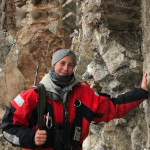 Bachelor in Biology at the Neuchâtel University, Switzerland, and Master of Science in Ecology and Conservation at the University of Groningen, Netherlands. Currently working for the CNR – Institute of Polar Sciences (CNR – ISP) in Venezia Mestre. She is Station Leader of the Italian Arctic station Dirigibile Italia in Ny-Ålesund, Svalbard. As Station Leader, she works daily on the field and in the lab, besides taking care of some parts of the station’s administration.
Bachelor in Biology at the Neuchâtel University, Switzerland, and Master of Science in Ecology and Conservation at the University of Groningen, Netherlands. Currently working for the CNR – Institute of Polar Sciences (CNR – ISP) in Venezia Mestre. She is Station Leader of the Italian Arctic station Dirigibile Italia in Ny-Ålesund, Svalbard. As Station Leader, she works daily on the field and in the lab, besides taking care of some parts of the station’s administration.
 Ministero dell'Universita e Ricerca
Ministero dell'Universita e Ricerca
Programma Ricerche Artico
Programma Nazionale di Ricerca in Antartide
 Ministero degli Affari Esteri e della Cooperazione Internazionale
Ministero degli Affari Esteri e della Cooperazione Internazionale
L'Italia e l’Artico
L’Italia e l’Antartide
CNR-ISP
National Research Council
Institute of Polar Sciences
c/o Scientific Campus - Ca' Foscari University Venice - Via Torino, 155 - 30172 VENEZIA MESTRE (VE)
Phone: +39 041 2348547 - E-mail: protocollo.isp AT pec.cnr.it
Fax: +39 041 2348 549 - Codice Fiscale: 80054330586 - P.I.:02118311006
Unless otherwise indicated, the content of this site is licensed : Attribution Non Commercial Share Alike 4.0 International (CC BY-NC-SA 4.0)
Privacy policy e Cookie policy - Transparent administration (CNR)
